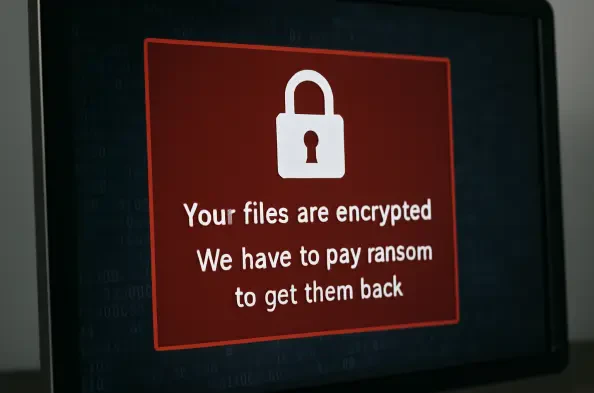In a landscape where digital threats evolve at an alarming pace, the healthcare sector finds itself grappling with a new wave of ransomware challenges that test the resilience of providers across the globe. Recent insights reveal a startling transformation in how cybercriminals target medical institutions, moving beyond traditional data encryption to more insidious forms of extortion. With sensitive patient information at stake, the pressure on healthcare organizations intensifies as they navigate uncharted territory in cybersecurity. These evolving tactics not only threaten operational stability but also place immense strain on already overstretched staff. As attackers exploit vulnerabilities with increasing sophistication, understanding the nature of these shifts becomes critical for building robust defenses. This exploration delves into the latest trends, financial impacts, and human costs that define the current state of ransomware threats in healthcare, shedding light on an urgent need for strategic adaptation.
Emerging Attack Strategies in Healthcare
The nature of ransomware attacks in healthcare has undergone a significant transformation, with exploited vulnerabilities now standing as the primary technical cause of incidents, making up a substantial portion of cases. Attackers are zeroing in on unpatched systems and known software weaknesses, a trend that signals a departure from earlier methods focused heavily on encryption. This shift underscores the importance of timely updates and proactive vulnerability management, as cybercriminals capitalize on gaps that organizations often fail to address. Beyond the technical realm, a lack of adequate staffing emerges as a critical organizational hurdle, with many providers struggling to maintain sufficient cybersecurity expertise. This shortage hampers the ability to monitor threats effectively and respond swiftly, leaving systems exposed to breaches that could have been prevented with better resource allocation.
Alongside these technical and staffing challenges, a notable decline in data encryption during attacks has been observed, dropping to a historic low compared to previous peaks. However, this seemingly positive development is overshadowed by a dramatic rise in extortion-only incidents, where data is stolen but not locked. Such attacks have surged, reflecting a calculated pivot by adversaries who exploit the sensitive nature of medical information to demand ransoms without encrypting files. This evolution in tactics highlights the growing cunning of attackers who adapt to stronger defenses by focusing on theft and coercion. Healthcare providers must now contend with the dual threat of data breaches and reputational damage, as the fear of public exposure often drives compliance with extortion demands. Addressing this requires not just technical solutions but also a cultural shift toward prioritizing data protection at every level of operation.
Financial and Operational Impacts
Economically, the ransomware landscape in healthcare has seen a striking downturn in the scale of demands and payments, offering a glimmer of relief to targeted organizations. Median ransom demands have plummeted significantly, falling to a fraction of their former highs, while payments have similarly dropped to record lows across industries. Recovery costs, excluding ransoms, have also decreased substantially, suggesting that healthcare may be becoming a less attractive target for cybercriminals. This financial shift could stem from enhanced defenses or a growing reluctance to meet exorbitant demands, signaling a potential turning point. Yet, while these numbers paint a picture of progress, they do not capture the full scope of challenges, as the operational burden of managing such incidents continues to weigh heavily on providers.
Despite financial improvements, the human toll on IT and cybersecurity teams remains a pressing concern, with every provider experiencing data encryption reporting adverse effects on staff morale and performance. Increased pressure from senior leadership and heightened anxiety about future attacks are common repercussions, creating a stressful environment for those on the front lines of defense. On a brighter note, recovery times have shown remarkable improvement, with a majority of organizations now restoring operations within a week, a stark contrast to slower timelines in the past. However, reliance on backups for data restoration has waned, raising questions about the reliability or trust in these systems. This operational dichotomy—faster recovery yet declining backup confidence—illustrates the complex balance healthcare providers must strike as they fortify their resilience against evolving threats.
Building Resilience Against Evolving Threats
While progress in combating traditional ransomware tactics like encryption is evident, healthcare organizations face persistent vulnerabilities that demand urgent attention and investment. The rise of extortion-based attacks, coupled with ongoing staffing shortages, underscores the need for comprehensive cybersecurity strategies that go beyond mere technical fixes. Strengthening defenses requires a multi-pronged approach, including regular system updates to close vulnerability gaps and enhanced training programs to bolster staff capacity. Additionally, fostering a culture of proactive risk management can help mitigate the impact of known security gaps that attackers frequently exploit. As threats evolve, collaboration across the sector to share best practices and intelligence will be vital in staying ahead of cybercriminals.
Reflecting on the strides made, it’s clear that healthcare providers have adapted remarkably to reduce encryption incidents and accelerate recovery in the face of daunting challenges. Yet, the shift toward extortion tactics revealed new weaknesses that demand innovative responses. The significant drop in ransom demands and payments marked a hard-won victory, but the emotional and operational strain on IT teams lingered as a stark reminder of the battle’s toll. Moving forward, prioritizing robust cybersecurity infrastructure and comprehensive support for staff emerges as essential steps to safeguard sensitive data. By investing in both technology and people, the sector can build a stronger foundation to navigate future threats, ensuring that patient care remains uncompromised in an era of relentless digital risk.






